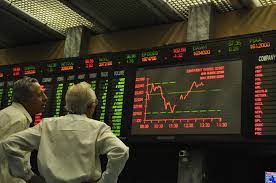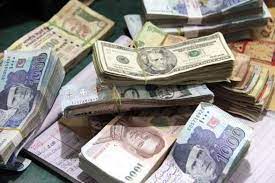In Karachi, the Pakistan Stock Exchange (PSX) reached a record-breaking high, surpassing 63,500 points before mid-day on Wednesday.

The local bourse’s surge was fueled by renewed confidence among local investors, prompted by the return of foreign investors to the market.
The benchmark KSE-100 Index climbed to an unprecedented 63,611.50 points, marking a 1% increase, or 655.48 points, from the previous day’s closing at 62,956.02 points. This rally represents one of the fastest in the past two decades, witnessing a remarkable 60% surge, equivalent to over 23,600 points, in slightly over five months. The index was around 40,000 points in June 2023.
Market discussions suggest that foreign investors are reentering the PSX due to factors such as the stabilized rupee-dollar exchange rate, early signs of economic recovery, and the return of political stability as preparations for the February 2024 general elections are underway.
For several years, investors had been net sellers in the market, influenced by the high volatility in the rupee-dollar exchange rates. The recent stability of the exchange rate, hovering around Rs 285 against the US dollar for the past three weeks, has encouraged investors to reengage with the PSX.
Leading the trading volume were penny stocks and telecom shares, specifically K-Electric and WorldCall Telecom (WTL), followed by Pakistan Refinery Limited (PRL) and other energy stocks.
Arif Habib Limited (AHL) projects a 32% growth in the benchmark index over the next 13 months, expecting it to reach 81,000 points by December 2024. AHL anticipates that the significant liquidity available to investors will drive this growth, as share prices remain relatively low despite the substantial gains in recent months.
However, it’s crucial to recognize potential downside risks to AHL’s estimates, including the vulnerability of the rupee-dollar exchange rate to global and local macro- and geopolitical developments, the threat of a global macro-slowdown, rising international commodity prices, political instability, and aggressive structural reforms that may impact short- to medium-term growth.






